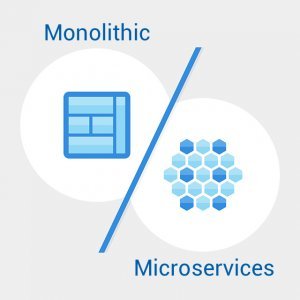Microservices are a upgraded approach to software architecture that helps apps scale and change over time. In the simplest form, they help build an application as a suite of small services, each running in its own process and are independently deployable.
Each microservice is a distinct unit within the software development project, with its own codebase, infrastructure, and database. Some of the largest apps in the world, such as Netflix, Amazon, Twitter, and Paypal use microservices architecture.
The opposite of microservices would be a monolithic application, which is built as a single autonomous unit. When a change is made to a monolithic app, it can slow down the entire system and can require building all new software for one small code modification. If you want to scale a specific function, you have to scale the entire application, which can be a killer to productivity and growth.
Most microservices started as a monolithic application. When it is transformed into a set of services, the app is easier to maintain, update, and develop. Different aspects of the app can be developed and deployed independently by a team of experts. As a result, the app can be constantly updated, because the overall software doesn’t need to be redesigned every time there’s a new feature. Microservices are particularly helpful for large enterprise applications which are developed by teams across different regions and abilities.
There’s no standard model that you’ll see represented in every system based on this architectural style, because every app uses a unique set of services. However each has six characteristics in common, which are as follows:
Multiple components – an inherent feature of microservices apps, who rely on multiple components that can be updated independently.
Cross- functional teams – every component of the app has a complete team to develop the product, then work together for a complete set of services.
Simple routing – microservices rely on the classic UNIX system of communication, meaning they receive requests, process them, and generate a response accordingly.
Decentralized – each product in the microservices app operates its own database.
Protected against failure – with so many services working together, failure can be inevitable, but the entire app does need to go down to fix one element.
Built for growth – microservices allow for growth and evolution, as apps change over time into forms that were not part of the original plan.
Microservices architecture apps have skyrocketed in possibility over the last few years, due to the growth of some popular apps, as well as technological advancements. Microservices are a part of a larger shift in IT departments towards a DevOps culture, and show no sign of slowing down.
